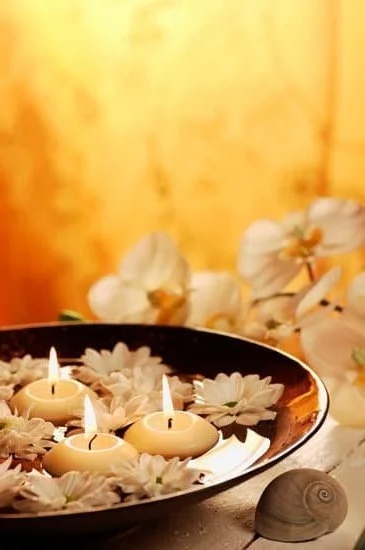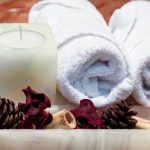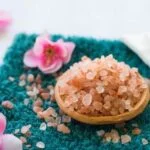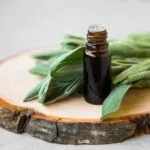Aromatherapy has gained popularity for its numerous therapeutic benefits, and a great way to enjoy these benefits is through the use of a diffuser. But what if you could create your very own aromatherapy diffuser? In this article, we will explore the world of aromatherapy and diffusers, and discover how you can make the best DIY aromatherapy diffuser right at home.
Aromatherapy involves the use of essential oils to promote physical and emotional well-being. Aromatherapy diffusers are designed to disperse these essential oils into the air, allowing their aromatic properties to fill a space. This not only creates a pleasant scent but also provides various health benefits such as stress relief, improved sleep, and mood enhancement. DIY aromatherapy diffusers offer a customizable approach to enjoying these benefits, allowing you to create your own unique blends and designs.
When it comes to DIY aromatherapy diffusers, there are different types to consider such as ultrasonic, nebulizing, and heat diffusers. Each type has its own pros and cons, and choosing the best type for your DIY project will depend on factors such as ease of use, maintenance, and desired level of scent dispersion.
In the following sections, we will delve into essential oils for aromatherapy diffusers, materials needed for DIY projects, step-by-step guides for creating your own diffuser, maintenance tips, safety concerns, and even bonus DIY recipes for different moods or effects. So let’s get started on this aromatic journey into the world of DIY aromatherapy diffusers.
Types of Aromatherapy Diffusers
When it comes to choosing the best DIY aromatherapy diffuser, it’s important to consider the different types of diffusers available. There are three main types of diffusers: ultrasonic, nebulizing, and heat diffusers. Each type has its own set of pros and cons, making them all suitable for different preferences and needs.
Ultrasonic diffusers work by vibrating water at a high frequency to produce a fine mist that is released into the air along with the essential oils. These diffusers are popular for their ability to also humidify the air, making them great for use in dry environments. They are also relatively quiet, making them perfect for bedroom or office use. However, they may not be as effective in larger spaces.
Nebulizing diffusers, on the other hand, do not require water and instead use only pure essential oil. They work by breaking down the oils into a fine mist that is then dispersed into the air. This type of diffuser is known for its strong scent and therapeutic benefits as it does not dilute the oils with water. However, they can be more expensive and may not be as efficient in smaller spaces.
Heat diffusers use heat to evaporate the essential oils and release their aroma into the air. These diffusers are simple and affordable but may alter the chemical composition of certain oils due to the heat. They are best suited for smaller areas and are not as effective in dispersing scent throughout larger spaces.
For DIY projects, ultrasonic or nebulizing diffusers may be preferable due to their versatility and efficiency in dispersing essential oil scents throughout different areas of your home or workspace. Ultimately, it’s important to consider your personal preferences and needs when selecting the best type of DIY aromatherapy diffuser for your project.
Essential Oils for Aromatherapy Diffusers
When it comes to creating the best DIY aromatherapy diffuser, choosing the right essential oils is crucial. Essential oils are concentrated natural extracts from plants that provide various benefits for mental and physical well-being. These oils are the key elements in aromatherapy and play an essential role in DIY diffusers.
Here are some popular essential oils used in aromatherapy:
- Lavender: Known for its calming and relaxing properties, perfect for relieving stress and promoting better sleep.
- Peppermint: Invigorating and refreshing, peppermint oil can help alleviate headaches and boost energy levels.
- Eucalyptus: With its fresh, minty aroma, eucalyptus oil is often used to clear congestion and improve respiratory health.
- Lemon: A bright and uplifting scent, lemon oil is great for enhancing mood and purifying the air.
When choosing essential oils for DIY diffusers, it’s important to consider personal preferences as well as the desired effects. Some may prefer floral scents for relaxation, while others might opt for citrus or minty scents for an energizing atmosphere. Mixing and blending different essential oils can also create unique and customized scents tailored to individual needs.
To create the best DIY aromatherapy diffuser using essential oils, it’s important to ensure that the chosen oils are of high quality. Look for pure, therapeutic-grade essential oils from reputable suppliers to guarantee their efficacy and safety when used in a diffuser. In addition, consider the potential effects of each oil on pets or individuals with sensitivities when selecting and blending them.
Experimenting with different essential oil combinations is part of the fun of creating personalized DIY diffusers. Whether it’s crafting a calming blend for relaxation or a revitalizing mix for concentration, the possibilities are endless when it comes to using essential oils in aromatherapy diffusers.
Materials for DIY Aromatherapy Diffusers
When it comes to creating your own DIY aromatherapy diffuser, choosing the right materials is crucial to ensuring that you end up with a high-quality and effective product. By using the best DIY aromatherapy diffuser materials, you can create a personalized and customized diffuser that suits your preferences and style.
In this section, we will detail the materials needed for creating a DIY diffuser, offer options for eco-friendly and budget-friendly materials, and provide guidance on where to find quality supplies.
Materials Needed
To create a DIY aromatherapy diffuser, you will need several key materials. First, you will need a base for your diffuser, which can be made of various materials such as ceramic, glass, or wood. The base should have enough space to hold the essential oils and allow for diffusion.
Additionally, you will need essential oils of your choice, which are the heart of any aromatherapy diffuser. Lastly, you will need a diffusing mechanism such as reeds or porous stones that allow the essential oils to disperse into the air.
Eco-Friendly and Budget-Friendly Options
For those who prioritize sustainability and eco-friendliness, there are several options for creating DIY aromatherapy diffusers using environmentally conscious materials. Reusable or recyclable bases made from bamboo or recycled glass are excellent choices for eco-friendly DIY diffusers. Additionally, opting for organic and sustainably sourced essential oils can further enhance the eco-friendliness of your project.
If budget is a concern, there are also many budget-friendly options for sourcing materials for DIY aromatherapy diffusers. Discount stores, thrift shops, or online marketplaces often have affordable bases that can be repurposed into unique and stylish diffusers. When it comes to essential oils, purchasing in bulk or choosing less expensive varieties can help keep costs down without compromising on quality.
Where to Find Quality Supplies
When embarking on a DIY aromatherapy diffuser project, it’s important to seek out high-quality supplies to ensure optimal performance and longevity of your creation. Quality essential oils can be sourced from reputable retailers specializing in natural products or directly from certified suppliers. Bases and diffusion mechanisms can be found at specialty craft stores or online platforms that cater to handmade crafts and projects.
By investing in quality supplies for your DIY aromatherapy diffuser project, you can create a delightful and effective addition to your wellness routine while enjoying the satisfaction of crafting something unique and personal.
Step-by-Step Guide for Making a DIY Aromatherapy Diffuser
A DIY aromatherapy diffuser is a wonderful and customizable way to enjoy the benefits of aromatherapy in your home or workspace. Creating your own diffuser allows you to choose the scents and materials that best suit your personal preferences and needs. Follow this step-by-step guide to make your very own DIY aromatherapy diffuser.
Gather Materials
The first step in making a DIY aromatherapy diffuser is to gather all the necessary materials. You will need a base, such as a small glass or ceramic container, reed sticks or bamboo skewers, and essential oils of your choice. The size and shape of the base can vary depending on your preference, so feel free to get creative with this part.
Prepare the Base
Once you have gathered all the materials, it’s time to prepare the base of your diffuser. Fill the container with a carrier oil, such as sweet almond oil or fractionated coconut oil. This will act as the medium for dispersing the essential oils into the air. Then, add several drops of your chosen essential oils into the carrier oil. Feel free to mix different oils together to create a unique scent that suits your mood or needs.
Add Diffusing Mechanism
Next, insert reed sticks or bamboo skewers into the prepared base. These sticks will absorb the scented oil mixture and release it into the air, providing a continuous aroma throughout the space. Ensure that they are placed securely in the base and spaced out evenly for optimal diffusion.
By following this easy step-by-step guide, you can create your very own DIY aromatherapy diffuser to enjoy the benefits of essential oils and aromatherapy in any room of your home. Experiment with different scents and combinations to find what works best for you.
Maintenance and Care for DIY Aromatherapy Diffusers
Proper maintenance and care are essential to ensure the longevity and optimal performance of your DIY aromatherapy diffuser. Regular cleaning and upkeep will also prevent the buildup of essential oils, which can affect the diffusion process and potentially create safety hazards. Here are some tips on how to maintain and care for your homemade diffuser:
- Cleaning: It’s important to clean your DIY aromatherapy diffuser regularly to remove any residue or build-up from essential oils. Use a mild detergent or vinegar solution to gently clean the diffusing mechanism and reservoir. Be sure to follow the manufacturer’s instructions for cleaning, as different types of diffusers may require specific methods.
- Refill on Time: When using your DIY diffuser, be mindful of refilling it with water and essential oils in a timely manner. Running the diffuser with an empty reservoir can cause damage to the device.
- Storage: Proper storage of your DIY aromatherapy diffuser is also crucial. When not in use, store it in a cool, dry place away from direct sunlight. This will help preserve the integrity of the materials and extend the lifespan of the diffuser.
In addition to these maintenance tips, it’s important to check for any specific instructions or recommendations provided by the manufacturer of your particular type of DIY aromatherapy diffuser for optimal care.
| Maintenance Task | Tips |
|---|---|
| Cleaning | Regularly clean with a mild detergent or vinegar solution |
| Refill on Time | Be mindful of refilling with water and essential oils in a timely manner |
| Storage | Store in a cool, dry place away from direct sunlight when not in use |
Adhering to these maintenance and care tips will help ensure that your DIY aromatherapy diffuser continues to provide you with the benefits of soothing scents and relaxation for many uses to come.
Safety Tips for Using DIY Aromatherapy Diffusers
When using a DIY aromatherapy diffuser, it’s essential to keep safety in mind to fully enjoy the benefits of essential oils without any adverse effects. Here are some safety tips to consider when using your best DIY aromatherapy diffuser:
1. Proper Dilution: Essential oils are highly concentrated and should always be properly diluted before use in a diffuser. This helps prevent skin irritation or allergic reactions, especially for those with sensitive skin. Follow recommended dilution ratios for safe use.
2. Ventilation: Ensure that the room where the DIY aromatherapy diffuser is placed has proper ventilation. This helps to disperse the scent effectively and prevents the accumulation of strong concentrations of essential oils in a confined space, which could cause respiratory irritation.
3. Quality Essential Oils: Use high-quality, pure essential oils for your DIY diffuser. Lower quality oils may contain additives or synthetic ingredients that can be harmful when diffused. Research reputable brands and sources for the best essential oils.
4. Monitoring Usage: It’s important not to overuse essential oils in a DIY diffuser as this can lead to olfactory fatigue or sensitization over time. Limit usage to recommended time frames and avoid continuous diffusion for long periods.
5. Safety with Pets and Children: Some essential oils can be harmful or toxic to pets and children if ingested or heavily inhaled. Use caution with oil selection and diffusion practices around pets and young ones.
6. Storage of Essential Oils: Properly store your essential oils away from direct sunlight, heat, and moisture to preserve their potency and prevent degradation that could lead to potential safety hazards during use.
By following these safety tips, you can enjoy the benefits of aromatherapy without any risks when using your best DIY aromatherapy diffuser. Always prioritize safety while creating a soothing ambiance in your living space with delightful scents through your handmade diffusion device.
Final Thoughts and Recommendations
When it comes to creating a DIY aromatherapy diffuser, there are several options to consider, and each type has its pros and cons. However, when looking for the best DIY aromatherapy diffuser, it’s important to choose one that is easy to make, effective in diffusing essential oils, and safe to use.
One of the most popular types for DIY projects is the reed diffuser. This type of diffuser uses rattan reeds to absorb and disperse essential oils into the air, creating a gentle and constant fragrance throughout a room.
To create a DIY reed diffuser, you will need just a few basic materials including a small glass or ceramic container, rattan reeds, carrier oil (such as sweet almond oil or fractionated coconut oil), and your choice of essential oils. The process involves mixing the carrier oil with your chosen essential oils in the glass container and then inserting the rattan reeds to allow them to absorb and diffuse the scented oil.
This type of DIY aromatherapy diffuser is budget-friendly and easy to customize with different containers and scents.
In addition to reed diffusers, another popular option for a DIY aromatherapy diffuser is a clay diffuser. This type of diffuser uses porous clay beads or pendants to slowly release essential oils into the air.
These clay diffusers can be handmade by shaping natural clay or using pre-made clay pendants that can be easily infused with essential oils. Clay diffusers are also inexpensive and provide an earthy, natural aesthetic when used as room decor while also serving their aromatherapeutic purpose.
| DIY Aromatherapy Diffuser Type | Main Materials |
|---|---|
| Reed Diffuser | Glass or ceramic container, rattan reeds, carrier oil, essential oils |
| Clay Diffuser | Porous clay beads or pendants, essential oils |
Bonus
In conclusion, DIY aromatherapy diffusers offer a cost-effective and customizable way to enjoy the benefits of aromatherapy in the comfort of your home. By exploring different types of diffusers, essential oils, and materials, you can create a personalized diffuser that suits your style and preferences. Whether you’re looking to relax, increase focus, or simply enjoy pleasant scents, there are endless possibilities for creating the best DIY aromatherapy diffuser for your needs.
When it comes to choosing essential oils for your DIY diffuser, it’s important to consider both the scents you enjoy and their potential therapeutic benefits. From soothing lavender to invigorating peppermint, there are numerous options to explore. By blending different oils together, you can create unique scent combinations that cater to your specific mood or desired effect.
To ensure the longevity and optimal performance of your DIY aromatherapy diffuser, it’s essential to prioritize maintenance and care. Regular cleaning and proper usage will help extend the lifespan of your diffuser while also ensuring safe and effective use. Additionally, being mindful of safety concerns related to essential oil usage is crucial for enjoying aromatherapy in a responsible manner.
In essence, creating a DIY aromatherapy diffuser allows you to fully personalize your aromatic experience while also reaping the benefits of aromatherapy. With the right materials and essential oils at hand, along with easy-to-follow recipes for different moods or effects, anyone can embark on this fulfilling and rewarding journey towards holistic well-being. So why not try making your own best DIY aromatherapy diffuser today? The possibilities are endless.
Frequently Asked Questions
What Is the Best Oil for Homemade Diffuser?
The best oil for a homemade diffuser is largely dependent on personal preference. Many people enjoy using essential oils like lavender, eucalyptus, or citrus oils for their pleasing scents and aromatherapy benefits.
How Do You Make a Strong Smelling Diffuser?
To make a strong smelling diffuser, you can add a higher quantity of essential oil to the diffuser base. Increasing the number of reed sticks can also help to disperse the scent more effectively throughout the room.
What Is Best Ingredients for a Diffuser?
The best ingredients for a diffuser include a carrier oil such as sweet almond or jojoba oil, along with essential oils of your choice. It’s important to use high-quality essential oils to ensure a pleasant and long-lasting scent in your diffuser.

Are you looking for a natural way to improve your health and wellbeing?
If so, aromatherapy may be the answer for you.





